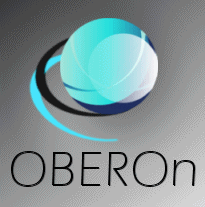document/content management system
 In
the broadest sense, document management systems (DMS)
can range from a shoebox all the way to an enterprise content management
system. There are several common issues that are involved in managing
documents, whether the system is an informal, ad-hoc, paper-based
method for one person or if it is a formal, structured, computer
enhanced system for many people across multiple offices. Most methods
for managing documents address the following areas: In
the broadest sense, document management systems (DMS)
can range from a shoebox all the way to an enterprise content management
system. There are several common issues that are involved in managing
documents, whether the system is an informal, ad-hoc, paper-based
method for one person or if it is a formal, structured, computer
enhanced system for many people across multiple offices. Most methods
for managing documents address the following areas:
| Location |
Where will documents be stored? Where will people
need to go to access documents? Physical journeys to filing
cabinets and file rooms are analogous to the onscreen navigation
required to use a document management system. |
| Filing |
How will documents be filed? What methods will
be used to organize or index the documents to assist in later
retrieval? Document management systems will typically use a
database to store filing information. |
| Retrieval |
How will documents be found? Typically, retrieval
encompasses both browsing through documents and searching for
specific information. What kind of information about documents
are indexed for rapid retrieval? |
| Security |
How will documents be kept secure? How will unauthorized
personnel be prevented from reading, modifying or destroying
documents? |
| Disaster
recovery |
How can documents be recovered in case of destruction
from fires, floods or natural disasters? |
| Retention
period |
How long should documents be kept, i.e. retained?
As organizations grow and regulations increase, informal guidelines
for keeping various types of documents give way to more formal
records management practices. |
| Archiving |
How can documents be preserved for future readability? |
| Distribution |
How can documents be available to the people that
need them? |
| Workflow |
If documents need to pass from one person to another,
what are the rules for how their work should flow? |
| Creation |
How are documents created? This question becomes
important when multiple people need to collaborate, and the
logistics of version control and authoring arise. |
| Authentication |
Is there a way to vouch for the authenticity of
a document ? |
|
| Traceability |
When, where and by whom are documents created,
modified, published and stored |
Document management systems commonly provide storage,
versioning, metadata, security, as well as indexing and retrieval
capabilities. Here is a description of these components:
 Metadata Metadata- Metadata is typically stored for each document.
Metadata may, for example, include the date the document
was stored and the identity of the user storing it. The
DMS may also extract metadata from the document automatically
or prompt the user to add metadata. Some systems also
use optical character recognition on scanned images, or
perform text extraction on electronic documents. The resulting
extracted text can be used to assist users in locating
documents by identifying probable keywords or providing
for full text search capability, or can be used on its
own. Extracted text can also be stored as a component
of metadata, stored with the image, or separately as a
source for searching document collections.
|
|
 Integration Integration- Many document management systems attempt
to integrate document management directly into other applications,
so that users may retrieve existing documents directly
from the document management system repository, make changes,
and save the changed document back to the repository as
a new version, all without leaving the application. Such
integration is commonly available for office suites and
e-mail or collaboration/groupware software. Integration
often uses open standards such as ODMA, LDAP, WebDAV and
SOAP to allow integration with other software and compliance
with internal controls.
|
|
- Capture
- Images of paper documents using scanners
or multifunction printers. Optical character recognition
(OCR) software is often used, whether integrated into
the hardware or as stand-alone software, in order to convert
digital images into machine readable text.
|
|
 Indexing Indexing- Track electronic documents. Indexing may
be as simple as keeping track of unique document identifiers;
but often it takes a more complex form, providing classification
through the documents' metadata or even through word indexes
extracted from the documents' contents. Indexing exists
mainly to support retrieval. One area of critical importance
for rapid retrieval is the creation of an index topology.
|
|
 Storage Storage- Store electronic documents. Storage of the
documents often includes management of those same documents;
where they are stored, for how long, migration of the
documents from one storage media to another (hierarchical
storage management) and eventual document destruction.
|
|
 Retrieval Retrieval- Retrieve the electronic documents from the
storage. Although the notion of retrieving a particular
document is simple, retrieval in the electronic context
can be quite complex and powerful. Simple retrieval of
individual documents can be supported by allowing the
user to specify the unique document identifier, and having
the system use the basic index (or a non-indexed query
on its data store) to retrieve the document. More flexible
retrieval allows the user to specify partial search terms
involving the document identifier and/or parts of the
expected metadata. This would typically return a list
of documents which match the user's search terms. Some
systems provide the capability to specify a Boolean expression
containing multiple keywords or example phrases expected
to exist within the documents' contents. The retrieval
for this kind of query may be supported by previously-built
indexes, or may perform more time-consuming searches through
the documents' contents to return a list of the potentially
relevant documents.
|
|
 Distribution Distribution- A published document for distribution has
to be in a format that cannot be easily altered. As a
common practice in law regulated industries, an original
master copy of the document is usually never used for
distribution other than archiving. If a document is to
be distributed electronically in a regulatory environment,
then the equipment tasking the job has to be quality endorsed
AND validated. Similarly quality endorsed electronic distribution
carriers have to be used. This approach applies to both
of the systems by which the document is to be inter-exchanged,
if the integrity of the document is highly in demand.
|
|
 Security Security- Document security is vital in many document
management applications. Compliance requirements for certain
documents can be quite complex depending on the type of
documents. For instance the Health Insurance Portability
and Accountability Act (HIPAA) requirements dictate that
medical documents have certain security requirements.
Some document management systems have a rights management
module that allows an administrator to give access to
documents based on type to only certain people or groups
of people.
|
|
 Workflow Workflow- Workflow is a complex problem and some document
management systems have a built-in workflow module. There
are different types of workflow. Usage depends on the
environment the electronic document management system
(EDMS) is applied to. Manual workflow requires a user
to view the document and decide who to send it to. Rules-based
workflow allows an administrator to create a rule that
dictates the flow of the document through an organization:
for instance, an invoice passes through an approval process
and then is routed to the accounts payable department.
Dynamic rules allow for branches to be created in a workflow
process. A simple example would be to enter an invoice
amount and if the amount is lower than a certain set amount,
it follows different routes through the organization.
|
|
 Collaboration Collaboration- Collaboration should be inherent in an EDMS.
Documents should be capable of being retrieved by an authorized
user and worked on. Access should be blocked to other
users while the work is being performed on the document.
|
|
- Versioning
- Versioning is a process by which documents
are checked in or out of the document management system,
allowing users to retrieve previous versions and to continue
work from a selected point. Versioning is useful for documents
that change over time and require updating, but it may
be necessary to go back to a previous copy.
|
|
 Publishing Publishing- Publishing a document is sometime tedious
and involves the procedures of proofreading, peer or public
reviewing, authorizing, printing and approving, etc. Those
steps endure prudence and logic thinking. Any careless
handling may result in the inaccuracy of the document
and therefore misleading or upset its users and readers.
In law regulated industries, some of the procedures have
to be completed with the evidences of their corresponding
signatures and the dates on which the document is signed.
Refer to the ISO divisions of ICS 01.140.40 and 35.240.30
for further information. The published document should
be in a format that is not easily altered without a specific
knowledge or tools, and yet it is read-only or portable.
|
|
- A content management system (CMS)
such as a document management system is a computer application
used to manage work flow needed to collaboratively create, edit,
review, index, search, publish and archive various kinds of digital
media and electronic text.
-
- CMS' are frequently used for storing, controlling,
versioning, and publishing industry-specific documentation such
as news articles, operators' manuals, technical manuals, sales
guides, and marketing brochures. The content managed may include
computer files, image media, audio files, video files, electronic
documents, and Web content. These concepts represent integrated
and interdependent layers. There are various nomenclatures known
in this area: Web Content Management, Digital Asset Management,
Digital Records Management, Electronic Content Management and
so on. The bottom line for these systems is managing content and
publishing, with a workflow if required.
|






 In
the broadest sense, document management systems (DMS)
can range from a shoebox all the way to an enterprise content management
system. There are several common issues that are involved in managing
documents, whether the system is an informal, ad-hoc, paper-based
method for one person or if it is a formal, structured, computer
enhanced system for many people across multiple offices. Most methods
for managing documents address the following areas:
In
the broadest sense, document management systems (DMS)
can range from a shoebox all the way to an enterprise content management
system. There are several common issues that are involved in managing
documents, whether the system is an informal, ad-hoc, paper-based
method for one person or if it is a formal, structured, computer
enhanced system for many people across multiple offices. Most methods
for managing documents address the following areas: Metadata
Metadata Integration
Integration Indexing
Indexing Storage
Storage Retrieval
Retrieval Distribution
Distribution Security
Security Workflow
Workflow Collaboration
Collaboration Publishing
Publishing